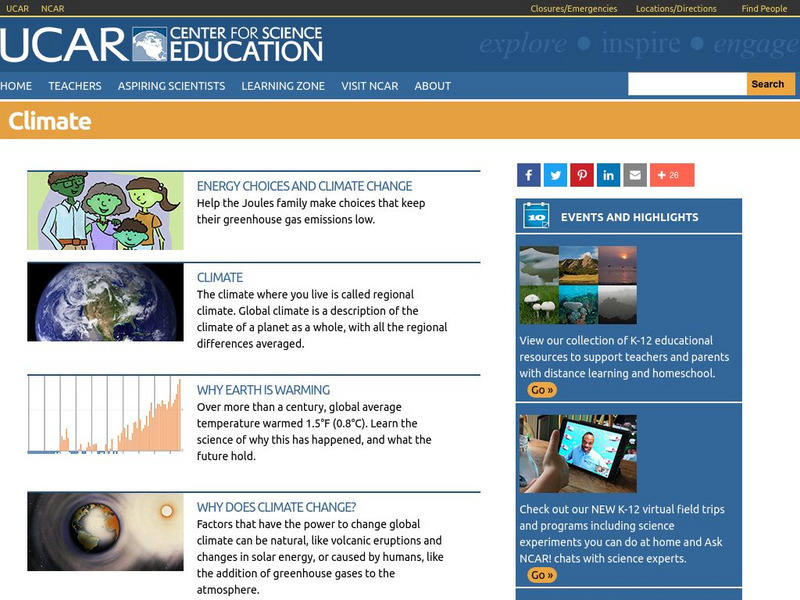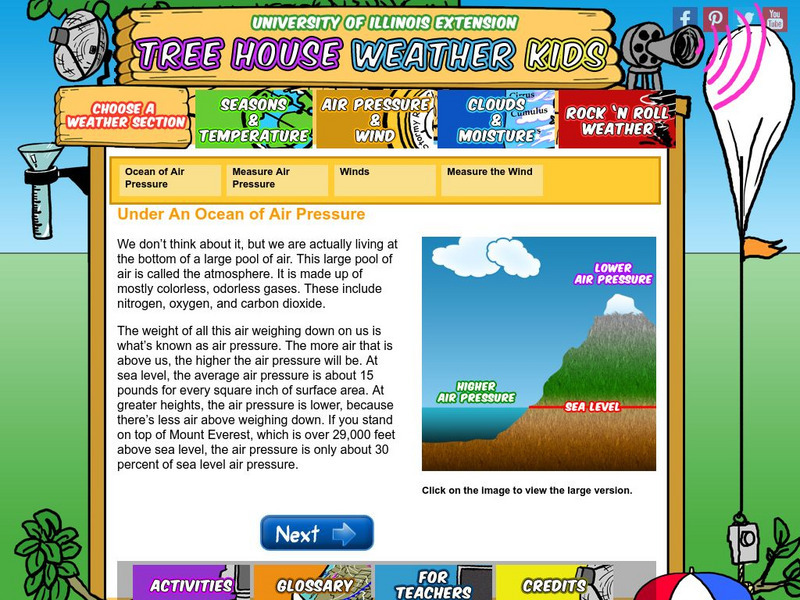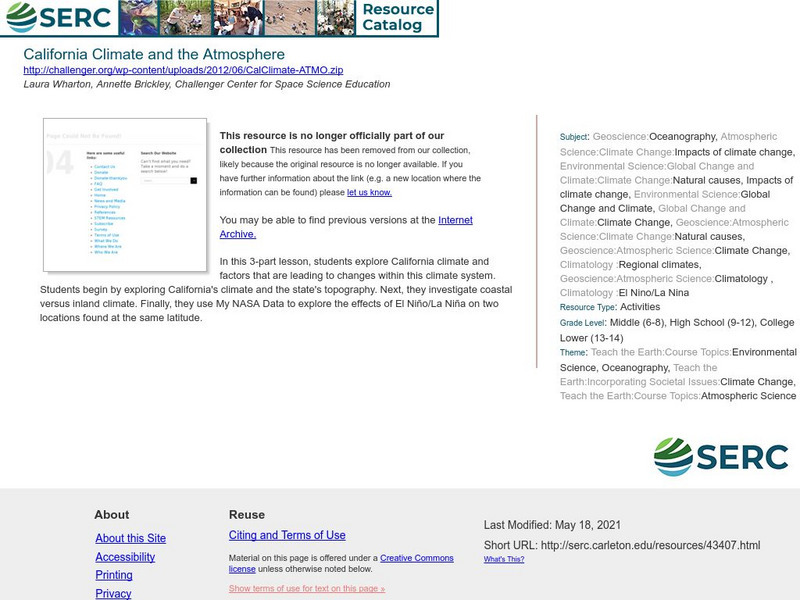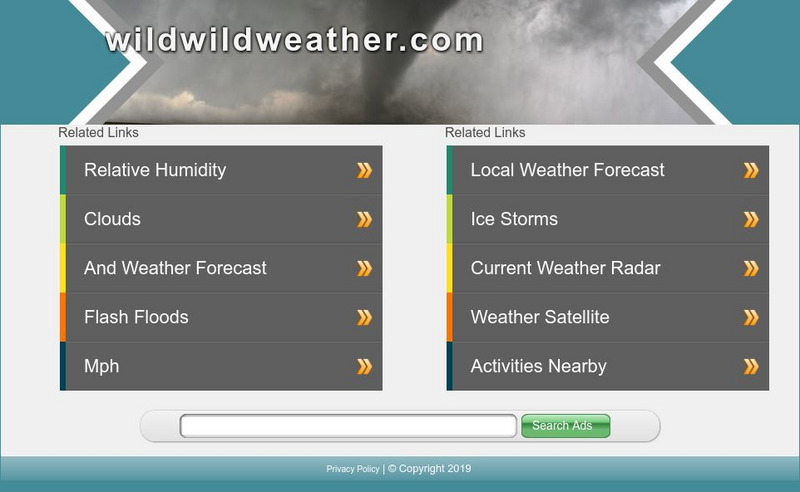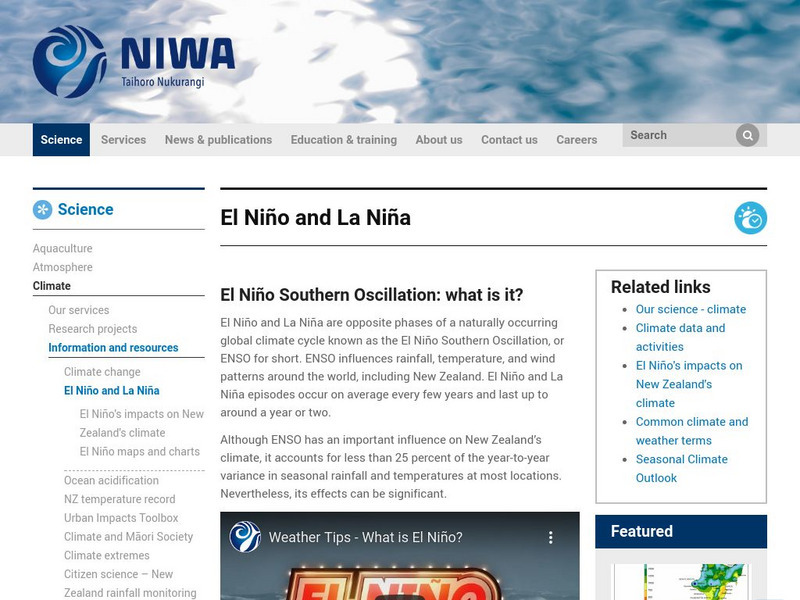University Corporation for Atmospheric Research
Ucar: Fact Sheet for El Nino
This site from the Univ. Corp. for Atmospheric Research provides detailed information on El Nino and its effects on the trade winds is offered at this site, with satellite photos.
University Corporation for Atmospheric Research
Ucar: Introduction to Climate
A detailed overview of the Earth's climate, with explanations about the difference between weather and climate, dendrochronology, palynology, and how Earth's climate has changed over time. All information is reinforced through pictures,...
National Weather Service
National Weather Service: Jet Stream: The Jet Stream
The concept of jet streams is explained on this site. Read about why jet stream winds blow from west to east, what the polar jet and subtropical jet are, the role that the rotation of the Earth plays, etc.
University Corporation for Atmospheric Research
Ucar: The Troposphere Overview
Overview of the Troposphere, the lowest layer of Earth's atmosphere.
NOAA
Noaa: National Climatic Data Center: Groundhog Day
Find background about Groundhog Day and the folklore involved. Look through the charts that show how closely Punxsutawney Phil's predicitions align with the actual weather.
University of Illinois
University of Illinois Extension: Under an Ocean of Air Pressure
Read an explanation of air pressure and how it affects the weather. Colorful diagrams are included.
University Corporation for Atmospheric Research
Ucar: El Nino Southern Oscillation
Learn how the El Nino-Southern Oscillation (ENSO) climate fluctuation affects weather around the world.
University Corporation for Atmospheric Research
Ucar: Unidata: Conventional Weather Reports
This resource talks about how the stations report their information. Several examples of how different universities compile the information are provided.
Ducksters
Ducksters: Earth Science for Kids: Weather Glossary and Terms
Explore the concepts of climate, cloud, front, dew, fog, humidity, isobar, supercell, and thunderstorm on this site.
Ducksters
Ducksters: Earth Science for Kids: Weather: Wind
Kids learn about wind including how it is formed, how it is measured, local and global winds including prevailing, westerlies, trade, and polar easterlies.
Ducksters
Ducksters: Earth Science for Kids: Weather: Tornadoes
Explore tornadoes on this website! Kids learn about tornadoes including how they form, characteristics, types including supercell and waterspout, categories, and fun facts.
Center for Educational Technologies
Severe Weather: Hurricane Watch
Hurricanes are the most powerful of storms. Using satellite images, this site allows you to plot the path of a hurricane and predict when it will strike land.
Other
Unep/siem D2 Weather
This site offers information on the effects of weather on islands. There is some mention of sea breezes.
Science Education Resource Center at Carleton College
Serc: California Climate and the Atmosphere
In this 3-part instructional activity, students explore California climate and factors that are leading to changes within this climate system. Students begin by exploring California's climate and the state's topography. Next, they...
Science Struck
Science Struck: Interpreting Barometric Pressure Readings
Explains how to read a barometer and interpret its meaning, as well as how the barometer was invented.
Dan Satterfield
Dan's Wild Weather: Humidity
Explains how dew point is used to show the amount of moisture in the air. Gives an activity for measuring the dew point at home.
Oklahoma Mesonet
University of Oklahoma: Overview of Meteorology
The University of Oklahoma explores numerous types of weather and atmospheric changes, as well as the reasons behind them. Content details the four seasons, common meteorological variables, the vertical structure of the atmosphere, how...
NOAA
Noaa: The Ionosphere [Pdf]
SEC produced several articles to help teachers teach about space weather. This one covers the ionosphere. It covers the characteristics, variability, and scintillation of this layer of the atmosphere. PDF format.
Science Buddies
Science Buddies: How Does a Wind Meter Work?
On a windy day it is hard to keep your hat on. The power of the wind can even be strong enough to power large wind turbines to make electricity. In this experiment, find out how you can make your own instrument to measure the speed and...
Other
Lehigh University: Climate Change
An inquiry-based science unit for middle school students centered on weather and climate. The lessons integrate technology and lab activities while teaching about Earth system energy balance, greenhouse gases, paleoclimatology, and how...
Weather Wiz Kids
Weather Wiz Kids: Hurricanes
A great resource offering the causes and effects of hurricanes, the reason why hurricanes are named the way they are, the difference between a hurricane and a tropical storm, hurricane "lingo," safety tips, and more. Follow links to...
University Corporation for Atmospheric Research
Ucar: Sundogs
Learn all about sundogs, an optical phenomenon in the atmosphere.
Other
Niwa: El Nino and La Nina
A webpage discussing the global climate systems of El Nino and La Nina. Learn that these weather patterns are "ocean warming" events that are global climate fluctuations that cause major changes in the Pacific atmospheric and ocean...
Science Buddies
Science Buddies: Weathering the Windchill: How Does Wind Speed Affect Objects?
With this science fair project measure the effect of wind speed on how quickly an object cools. The Science Buddies project ideas are set up consistently beginning with an abstract, objective, and introduction, followed by a section on...

